Cape Fear
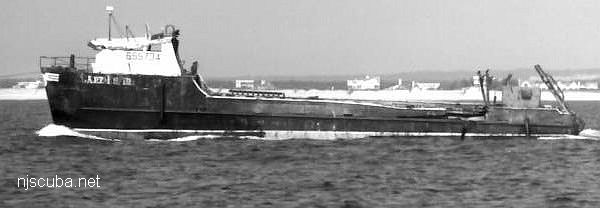
- Type:
- artificial reef, clam dredge
- Built:
- 1983, James K Walker Marine, Moss Point MS USA
- Specs:
- ( 112x24 ft ) 188 gross tons
- Sunk:
- Wednesday March 8, 2000 - Moriches Artificial Reef
- Depth:
- 75 ft
- GPS:
- 40°43.505' -72°46.386'
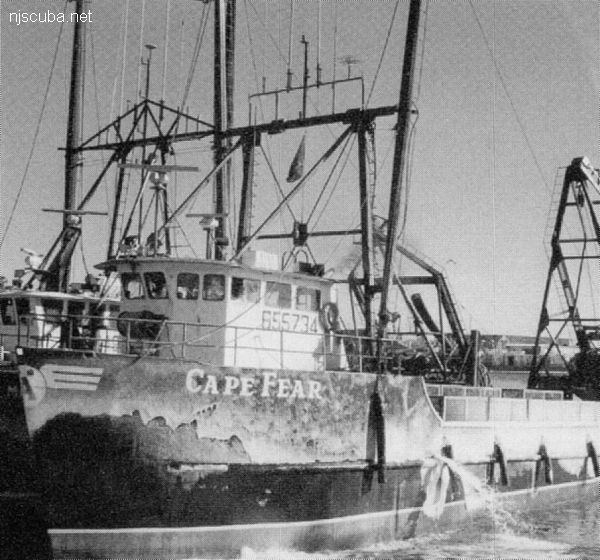

The builder lists the Cape Fear as an OSV, or 'Ocean Support Vessel' - a general-purpose vessel used to supply offshore oil rigs and other purposes. In 1992 she was converted to a 'Refrigerated Sea Water' clam dredge, something that would certainly have affected her loading and stability. Clamming gear is very heavy and high-mounted, and a full cargo of clams in steel cages is likewise very heavy.
In 1996, the Cape Fear was cut in two and a 21-foot 'plug' was inserted in the middle, extending her length from 91 feet to 112 feet. * This would have affected her stiffness and seaworthiness, as well as her speed and handling. In heavy weather in 1997, her keel cooler ( an underwater radiator for the engine ) pulled apart in rough weather. I would take this as an indication of excessive hull flexing. Her hold covers fit poorly, and in rough seas they would have fit even worse.
* This is not an uncommon operation; it is also done on aircraft, which require two plugs - one in front of the wings and one behind for balance. This is also how stretched limousines are made. It is perfectly safe if done properly.
No wonder the boat had such a bad history. The Cape Fear sank three times, the last time off Cape Cod claiming the lives of two of her crew. Twice she was raised and put back into service. The third time the old hull was raised, Cape Fear was fortunately damaged beyond economic repair, so the vessel was used as an artificial reef.
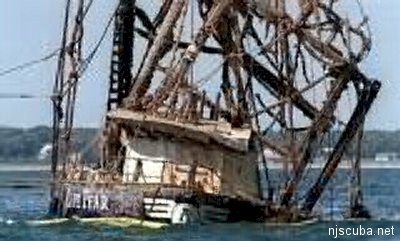
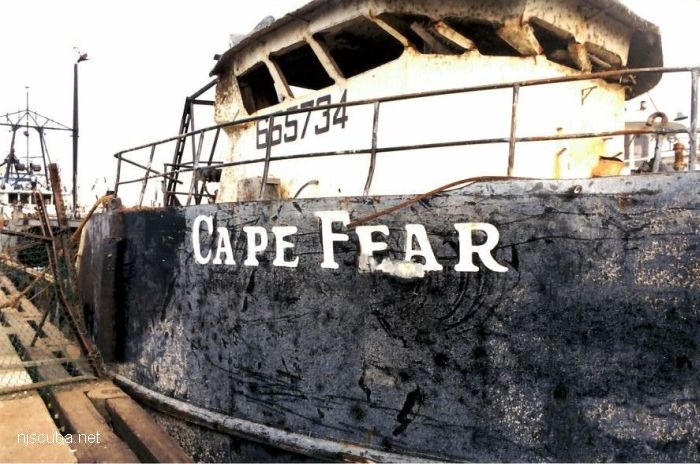
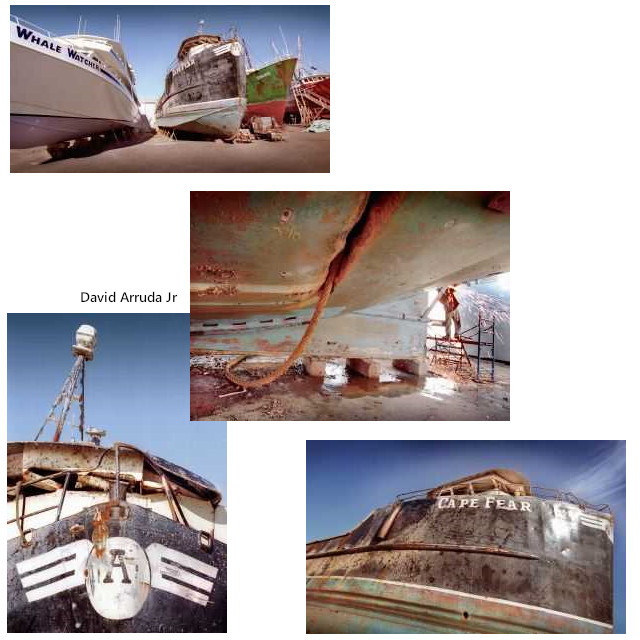
From the Coast Guard Report:
(3) F/V Cape Fear. Sinking, 8 January 1999, loss of two lives, three survivors.
The F/V Misty Dawn reported the F/V Cape Fear was taking on water with five persons on board off of New Bedford, MA. Approximately 20 minutes before sinking, the Cape Fear Captain called the Misty Dawn and reported they "took two good ones, " implying two hard waves or rolls. Later, the Cape Fear reported they were having "a problem" and asked the Misty Dawn to check on them when they got a chance. When the Misty Dawn called back the Cape Fear reported there was water everywhere and asked the Misty Dawn to call the Coast Guard. The Misty Dawn rescued three crew members.
The Cape Fear was laden with clams as she was returning to New Bedford. The vessel's Captain testified that the three deckhands were talking in the pilothouse, with "not a care in the world" when they initially noticed the stern was sinking. The vessel was operating with less than 18 inches of freeboard, fully loaded, and taking water over the stern while a port aft hatch cover was open approximately 6 inches. The weather was 6-10 foot seas, 25-30 knot winds, with rain and sleet.
Preliminary Findings:
- Vessel loaded with 130 cages of clams at 32 bushels per cages - 10 more cages than specified in its Stability Manual.
- Survivors testified emergency drills were only discussed, not performed as if an actual emergency. Crew did not have any training other than CPR. Drills were not logged.
- The clam tank hatches were not maintained in a watertight condition.
- The port aft clam hatch was open approximately 6 inches.
- The vessel sank within 5 minutes of when the crew noticed water had stopped shedding off deck at the aft clam tank.
- Two survival suit zippers (worn by the deceased members) were difficult to pull up. Only 1 of 5 survival suit lights worked and one suit (on a deceased crewman) did not have enough reflective tape.
- Divers found the EPIRB in the galley tethered to the EPIRB bracket. There was no time to manually deploy the liferaft; however, the hydrostatic release worked and the raft did deploy at some later time.
- The F/V Misty Dawn rescued the master, mate and one deckhand. These survivors had been in water approximately 30 minutes. One crewman remains missing; he was last seen with his survival suit half donned. The body of the other crewman was found the next morning washed ashore with his survival suit zipped-up to the waist only.
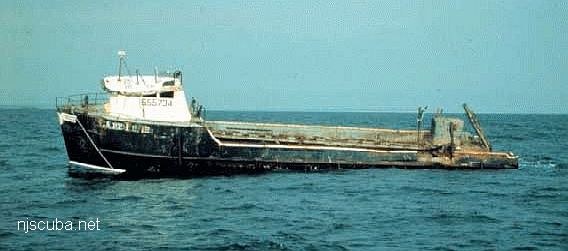
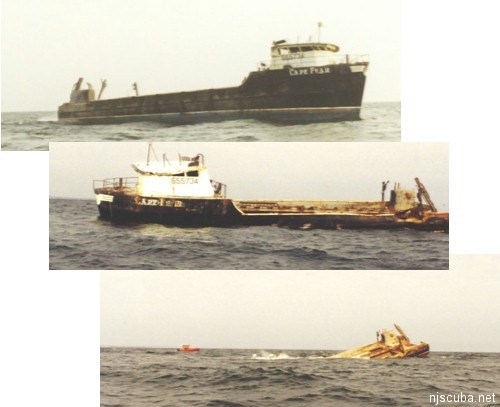
Cape Fear heads to Long Island, NY
By Jack Stewardson, Standard-Times staff writer
NEW BEDFORD - The Cape Fear, the ill-fated ocean quahogger that sank a little over a year ago with the loss of two lives, last night was being prepared to be towed out of the harbor to become part of an artificial reef system off Long Island, N.Y. The 112-foot vessel, which was raised last summer off Buzzards Bay Light, was to be towed by the tug Venus on a 14-hour run to Moriches Inlet, where it is expected to be sunk as part of an artificial reef project to provide habitat for fish. "It's a pretty simple operation, " said Steve Heinz, a marine biologist with the New York Department of Environmental Conservation.
Artificial reefs provide underwater habitat for fish as the reefs become encrusted with vegetation and invertebrates that provide forage food and shelter for fish. The state agency and the nonprofit Moriches Offshore Reef Fund have been building a reef complex about 2 1/2 miles off Moriches Inlet along the southern coast of Long Island.
The Cape Fear was returning home to New Bedford in a snow squall on the evening of Jan. 8, 1999, when it began to take on water and then capsized near Buzzards Bay Light. Three crew members, skipper Steven Novack, mate James Haley Jr., and deckhand Joseph Lemieux, were rescued from the icy water by the fishing vessel Misty Dawn. But two others, Paul Martin of Fairhaven and Steven Reeves of New Bedford died. Mr. Martin's body was found a day later off Gooseberry Neck in Westport, while Mr. Reeves's body was never recovered. Families of the two fishermen filed lawsuits seeking a total of $12 million from Cape Fear Inc.
Subsequent plans by owner Warren Alexander to raise the vessel last summer with the intent to return it to fishing drew rebukes from the families of the lost fishermen who did not want to see it operating out of New Bedford again. The issue became moot, however, when the vessel was brought back to the surface badly damaged. The New Jersey salvage firm, Don Jon Marine Inc., raised the vessel from a depth of 78 feet.
Salvage operations were hampered because an estimated 200 tons of sand had inundated the sunken vessel during its time on the bottom. When the steel-hulled vessel was brought to the surface, the roof of its pilot house was crushed, there was a large hole in the port side near the engine room, there was further hull damage from gashes caused by lifting slings, and the vessel's A-frame was also damaged.
The sinking was one of four fishing vessels to sink in the Atlantic within a month, which prompted the formation of a Coast Guard panel to look into safety aboard fishing vessels. The exact cause of the sinking of the Cape Fear is still unknown. A one-man inquiry by Coast Guard Capt. George Matthews concluded with lengthy hearings on the Cape Fear casualty late last year, but a report on the sinking has yet to be issued.
The Cape Fear, which was hauled and stripped last year, has been moored in the upper harbor for the past several weeks. Conrad Roy of Tucker-Roy Marine Towing and Salvage was hired by the New York environmental commission to tow the Cape Fear to its final resting place. He said the plan is to sink the vessel off Moriches Inlet upon arrival at the site.

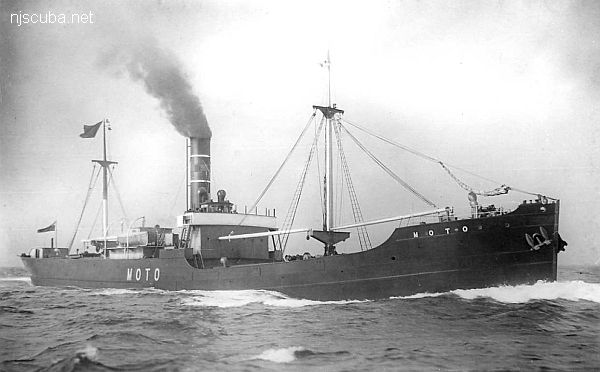
Questions or Inquiries?
Just want to say Hello? Sign the .